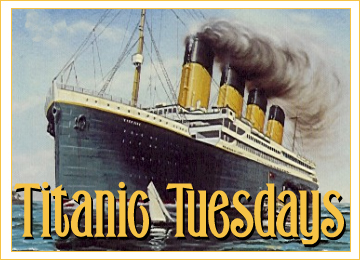
Time for my second Titanic Tuesday post. I’m not sure how long I’ll keep these up: I’m bound to run out of interesting topics at some point. But as long as I have something to talk about, I’ll try to keep it a weekly feature.
Fashion in 1912 was vastly different than what we’re familiar with today. It’s fascinating to see just how much has changed in only 100 years, both in dress itself and etiquette. After researching it for Destined, I can say that, while the dresses back then were pretty, I’m very glad I live in the 21st century!
Sailing on a ship like the Titanic was a big deal, and everyone brought their A game when it came to their wardrobe. Many of the wealthier passengers were returning from Paris, where the latest fashions of the season had recently been unveiled. It’s safe to assume much shopping transpired while there, and the voyage was doubling as a kind of fashion show for many to show off their newest purchases. Moreso in the First Class, of course, but in Destined I chose to give Noelle a fashionable wardrobe as well. She was, after all, French, and her roommate was a French model, so between the two of them they would have been fairly well-dressed, even if their clothing wasn’t the most expensive or cutting-edge.
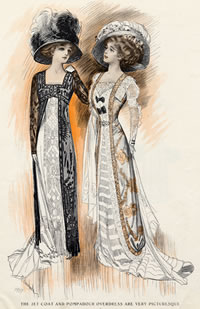
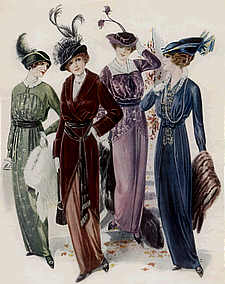
Etiquette of the time required that clothing was changed often: a new outfit for every meal or other major occasion. Most passengers would have worn at least 3 outfits a day. Breakfast attire for women was more casual, usually a tea gown that was made of loose-fitting chiffon, long sleeves and a low neck. And, most importantly, it often had no waist and didn’t require a corset. Dresses were always long: the sight of a lady’s ankle in 1912 was considered shocking. Later in the day, dresses became more fitted, with narrow, sometimes high (empire) waists, narrow skirt (called a hobble skirt) and high, round bust. Some hobble skirts were so tight at the ankles that the wearer would have to take shorter steps than normal in order to walk. Why this was considered such high fashion is still beyond me. Fabric used most often was linen, wool and silk, with silk or taffeta underskirts, and dresses were often accented with beading, ribbon or embroidery.
Common accessories included large hats (sometimes adorned with dyed feathers), long gloves, silk stockings and parasols. Jewelry was also worn, but diamonds were considered vulgar on young women. Hair was nearly always worn up, held in place with long, sharp pins, often under a large hat. Once a young woman was mature enough to be marriageable, she wore her hair up at all times. Wearing it down, unless you were still a young girl, was the sign of a promiscuous woman, and was not done. (I deviated from this once for Apolline, but as a 21st century woman, she didn’t know any better.)

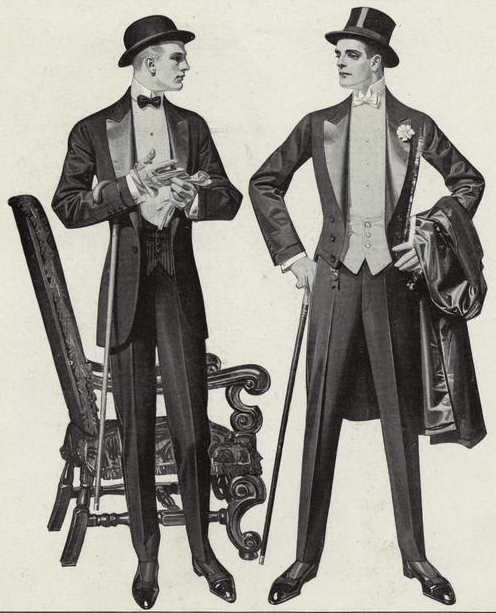
For the men, dress was a little simpler. They wore suits that varied in formality depending on the occasion. Like women, morning dress was more casual, but was still a full suit with lounge coat, matching vest and tie. Bowler hats were worn if going outdoors. For dinner, tuxedos with white ties were worn.









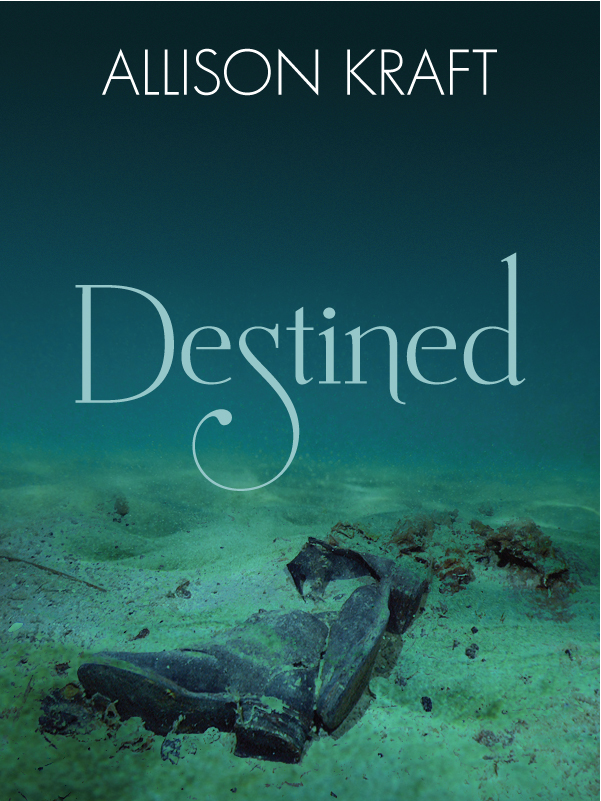
What about when Rose had her hair down for the Kiss on the Bow scene? I guess she was being promiscuous. ;)
ReplyDelete@anann73 James Cameron took a few liberties. Besides, she did get naked for a man she'd only known a few days, then have sex with him in a stranger's car. ;)
ReplyDeleteI watched Titanic (again) because of this post
ReplyDelete